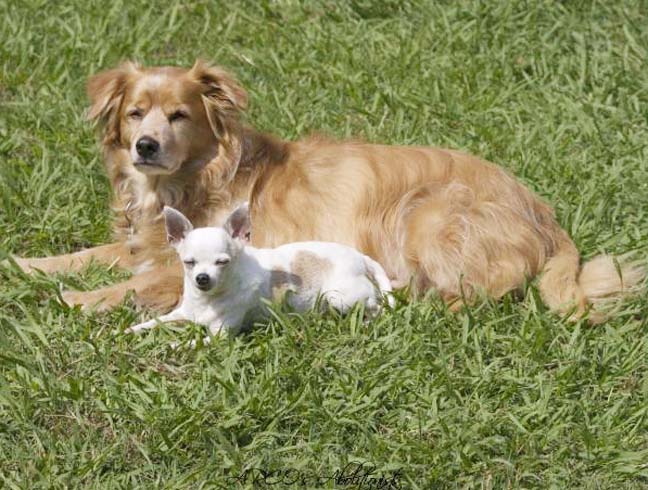Last week, we discussed the option of spaying/neutering as a method of pregnancy prevention. This is such an important issue that we feel it should be given even more prominence than the articles we usually present. Today’s publication is taken from an editorial I wrote for a GSPCA Newsletter, some time ago. The arguments are still valid so many years later, perhaps even more so.
My colleague, Dr Waldron wrote in that same Newsletter about the unhappy experiences of abandoned animals. One of the reasons given for carrying out what seems to be such a cruel and dastardly act (“straying” the animal) is that owners cannot cope with the puppies and kittens that are presented to them twice a year by their pets. Well, let’s be quite clear on this: Straying an animal in order to solve this problem is both cruel and illogical, even illegal.
 The abandoned pet will still continue to produce offspring, only, in this instance, there is no owner to help protect both mother and puppies/kittens.
The abandoned pet will still continue to produce offspring, only, in this instance, there is no owner to help protect both mother and puppies/kittens.
There is one option that this article would like to emphasise, which could help solve the particular problem of unwanted puppies and kittens. Owners can have pets spayed (females) or neutered (males). This would entail a surgical intervention which costs somewhere between $8000 and $10,000 for a dog according to the size and gender and $5000 to $8000 for a cat. By comparison I should mention that animal clinics and hospitals in the United States of America charge the US$ equivalent of $20,000 and $40,000 (and more) for exactly the same operation using exactly the same drugs (and skills). The above mentioned prices are just for the surgery.
The medication costs associated with the post-surgical care are much higher than those prescribed by local vets. Also, it is almost compulsory in the USA, Europe and most other countries with sophisticated small animal practices that the dog/cat has to remain overnight in the vet’s clinic. Note that I am not commenting on the costs charged by vets in other countries or their post-surgical patient recuperation regimes, rather I am maintaining that local veterinary surgeons do not usually charge exorbitant fees for surgeries. Our market, in all likelihood, could not sustain high prices and the whole issue would become counter-productive. Pet owners would not spay/neuter their animals, and there will be a proliferation of unwanted offspring.
 Spaying (ovariohysterectomy) involves the removal of the ovaries and the uterus (womb) from the adult female dog/cat. It makes sense for all sort of reasons, not only that of ensuring that no unwanted puppies or kittens come into this world. There is enough evidence in the literature which shows that there is a risk of the emergence of particular ailments within the reproductive system of males/females that have not been castrated/spayed. For example, male dogs can develop testicular and penis cancers and females can get infections of the womb and mammary and vaginal tumours.
Spaying (ovariohysterectomy) involves the removal of the ovaries and the uterus (womb) from the adult female dog/cat. It makes sense for all sort of reasons, not only that of ensuring that no unwanted puppies or kittens come into this world. There is enough evidence in the literature which shows that there is a risk of the emergence of particular ailments within the reproductive system of males/females that have not been castrated/spayed. For example, male dogs can develop testicular and penis cancers and females can get infections of the womb and mammary and vaginal tumours.
Furthermore, during the mating seasons, dogs and cats tend to roam far away from home into other animals’ territories. Fights may ensue from which serious injuries may be sustained. Some of the lesions can be of such magnitude that the animal dies or has to be euthanized or has to make frequent visits to the veterinarian in order to be kept alive.
Also, you don’t want some huge roaming dogs/tomcats “raping” your small female, possibly impregnating her, or worse, injuring her during copulation. In fact, the very unstoppable attention (and concomitant noisy nocturnal visits) by oversexed beaus during the mating season is in itself distressing. I should mention that scientific literature has recently been documenting a relatively common feline viral disease which is similar to AIDS and which can be transmitted during mating. The moral of the story is that once the ovaries and the womb have been removed from the females, the latter will not come in heat, and therefore will not be mated.
The monetary costs associated with the spaying and neutering are mentioned above. The GSPCA has a programme which assists those people who love companion animals, but who may not be in a position to pay entirely for the surgery. Essentially, it is a free spay and neutering programme. One needs only to contact our Clinic and Shelter at Robb Street and Orange Walk and make the arrangements with the Manager. It’s simple as that. This opportunity should be exploited while it lasts.
Please implement disease preventative measures (vaccinations, routine dewormings, monthly anti-heartworm medication, etc) and adopt-a-pet from the GSPCA’s Animal Clinic and Shelter at Robb Street and Orange Walk, if you have the wherewithal to care well for the animals. Do not stray your unwanted pets, take them to the GSPCA’s Clinic and Shelter instead. If you do not wish your pet to have puppies or kittens, you may exploit the GSPCA’s free spay and neutering programme. If you see anyone being cruel to an animal, or if you need any technical information, please get in touch with the Clinic and Shelter by calling 226-4237.







